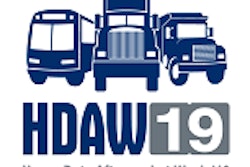By Bill Wade, Wade & Partners
I looked back at HDAW programs since the first one in 2006. Most featured different flavors of problems and opportunities most of us will be discussing in Las Vegas next week. One huge difference … we have been talking as if all these trends are slated for the future … next-generation situations.
They are, in fact, all here now:
- Onslaught of disruptive technology.Established competitors and channels are being commoditized or replaced through digitization, information science advancements and the innovative use of new on-vehicle technology and automation. Examples include developments such as machine learning, the Internet of Things and robotics.
- Accelerating democratization of information.The increased volume, transparency and distribution of information require organizations to rapidly engage in multidirectional communication and complex collaboration with customers, suppliers and fellow group member partners.
- All-out war for talent.As creative knowledge- and learning-based tasks become more important, organizations need a distinctive value proposition to acquire and retain the best talent, which is often way more diverse than found in this industry. These “millennials workers” often have nearly alien thoughts and experience and may have different lifestyle desires.
- Quickly evolving environment.All stakeholders’ demand patterns are evolving rapidly: customers, supplier partners and regulators have pressing needs. Private equity investors are demanding growth, which inevitably results in acquisitions and restructuring; and competitors and collaborators demand action to accommodate fast-changing customer priorities.
When even the best 2006 organizations have tried to engage with the new environment, it has not worked out well for many. A few companies have thrived over this time, but there have been extended periods of massive personnel turnover.
Defense is not usually positive … how to go on offense
So, what are supplier attributes business customers will value most? Dr. Bill McCleave, a super industry researcher and consultant who specializes in supply chain evolution, simplified the question:
“While it’s true that smaller firms can survive selling traditional products and providing traditional services, the secret to longevity may lie in cost reduction, efficiency, speed and product application skills. Many smaller firms gain a competitive advantage because of their customer knowledge, proximity, flexibility and ability to take on a variety of customer problems and provide solid solutions.”
In addition to simple value-added services, distributors may decide to offer further services that differentiate them from the competition, such as: “Simply put, a supplier attribute is a quality or characteristic that is used by customers to measure and value suppliers. Ask any customer to list important attributes and most will answer ‘service’ first.” The other attributes on the list will vary but likely will include some of the following:
- Installation of products
- Field service and maintenance
- Fabrication
- Component assemblies
- Custom products
- Solution design and engineering
These services can provide excellent opportunities for growth, enhanced customer intimacy and higher technology product applications, but there are some challenges. These include added costs, risks and scope creep.
Value-added offerings must be carefully orchestrated to match distributor effort with solution results and customer-perceived value. Unfortunately, many distributors have failed to manage the value they provide and fall into traps where services for sale get blurred with standard offerings and the customer tries to get more for less.
Before adding value-added services as differentiators, consider these points and actions:
- Make sure customer requirements are well understood.
- Establish a clear distinction between product-attached and optional services, and make sure both types are priced correctly.
- Develop and use a menu (or family) of service offerings.
- See that additional organizational burdens are considered (and defined processes are in place) to manage new service offerings and opportunities. These could include labor and asset utilization, equipment and technology, billing and receivables, inventory and distraction/risk factors.
- Have confidence that your organization can sell new services and negotiate any new relationships these services may entail.
- Ensure that the service team puts processes in place to assure ongoing service improvement through standardization and the application of automation, tracking and analytic technologies.
- Remember that not all “value-added” opportunities are worth pursuing, and assure that those pursued are.
To be effective, value-add services must be supported by sufficient processes and technologies. A question that always sparks heated debate amongst distributor principals: The ancient — prior to last year (even with its refinements) — has accumulating drawbacks. Now, with accelerating omnichannel cloud commerce targeting B2B channels, what other questions come first?
Bill Wade is a partner at Wade & Partners and a heavy-duty aftermarket veteran. He is the author of Aftermarket Innovations. He can be reached at [email protected].









